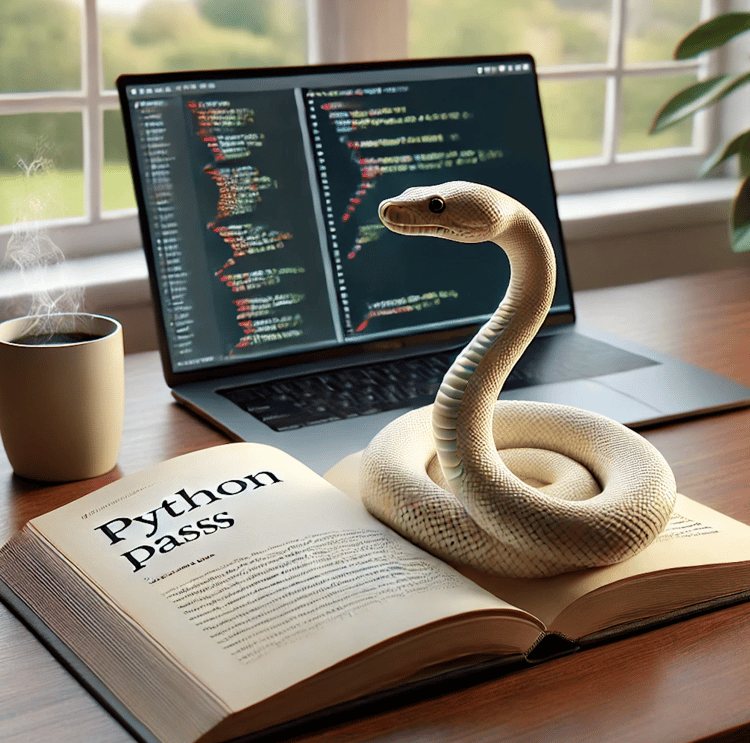Course
The assert statement in Python programming is a tool for establishing fundamental truths in your code. They work by empowering developers to validate assumptions within their code. In this tutorial, we will master Python's assert statement, including its syntax, usage, and applications in debugging and error detection. By mastering Python's assert statement, we will be one step closer to becoming an expert Python Programmer.
The Short Answer: How to Write Python Assertions
The syntax of the assert statement is straightforward:
assert condition, messageHere, condition refers to the expression being tested, while message is an optional error message that appears if the assertion fails.
Here are a few assertions you can try in your Python code to get the hang of it. In the first case, the expression 3<4>5 is logically incorrect so Python raises an AssertionError with the message that we provided: "Math does not work that way." In the second case, the expression 0==0 is a tautology so we never see the message, "This shouldn't throw an error."
assert 3<4>5, "Math does not work that way."assert 0==0, "This shouldn't throw an error."Overview of Python's assert Statement
Let's now take a closer look into Python's assert statement, including how and why it is used. By the end of this tutorial, you will be an expert in how to use the assert statement in Python.
What are Python assertions?
Assertions in programming, more generally, are constructs used to verify the veracity of conditions in the codebase. In other words, they are truths that the program must comply with, or else they will throw an error. By using the word "assert", Python implements these programming assertions with very literal syntax: The assert statement allows us to create these assertions.
When to use Python assertions
Assertions are invaluable for debugging, validating assumptions, and ensuring your code behaves as expected under specific conditions. They allow you to tell the computer what you expect it to do and ask it to stop when it’s doing something differently. This is useful when building a new program or adding a feature or updating an existing app.
Assertions shine in scenarios where developers must enforce preconditions, postconditions, or invariants within their codebase. They act as guardrails, preventing the code from progressing if certain conditions are violated, thus aiding in the early detection of potential bugs.
By strategically placing assertions throughout the code, you can catch errors closer to their origin, simplifying debugging. DataCamp's Python Developer career track is a great course for aspiring developers of all levels to practice functional programming skills because it includes exercises with both basic and more advanced concepts.
When not to use Python assertions
While assertions are invaluable during development, there are scenarios where their usage might be inappropriate.
It’s important to understand that when your code gets compiled for production, the assertions may be globally disabled. This means you should not rely on assertions to handle run-time problems, like a user inputting the wrong data. Instead, they should be used for development problems, like identifying logic or math inaccuracies.
For handling errors or validating data in production code, try incorporating exception handling constructs to allow the code to gracefully recover from errors, log relevant information for debugging purposes, and provide meaningful feedback to users.
You can learn more about finding errors and correcting them in our Exception and Error Handling in Python tutorial or by taking our Associate Data Scientist in Python course.
Common Mistakes and Misconceptions with the assert Statement in Python
A common mistake when using the assert statement in Python is to use parentheses. This is an understandable mistake since many functions use parentheses, and including them can feel like second nature. However, the assert statement is not technically a function in Python so it uses a special syntax. If you use parentheses, you will likely run into syntax warnings and logical errors.
 SyntaxWarning: assertion is always true, perhaps remove parentheses?
SyntaxWarning: assertion is always true, perhaps remove parentheses?
Another common mistake is forgetting the comma after the condition. Doing so will result in a syntax error.
 SyntaxError: invalid syntax
SyntaxError: invalid syntax
The AssertionError exception
An AssertionError exception is raised whenever the terms of an assertion are violated. This error halts program execution; any optional error message you set will be displayed. Given that assertions are used primarily to test your code during development, if you get a Python AssertionError exception message, you generally want to take it seriously. It could point to a fatal flaw in your code.
Practical Applications
An assert statement can be used in many practical applications in Python. Our Writing Functions in Python interactive course provides many exercises that will help you gain mastery. Here are a couple of examples.
Using assert within a function
A useful way to use assertions is to insert them into functions. This can help ensure that your functions behave as intended.
def divide(a, b):
assert b != 0, "Division by zero!"
return a / b
# Test cases
print(divide(10, 2)) # Output: 5.0
print(divide(8, 0)) # AssertionError: Division by zero!Using assert with unittest
Testing your code is an essential step in the development process. Unittest is a library designed to help you test your code efficiently, and it utilizes assert statements to do so. This is the most often way I use assert statements. Here’s an example that you might find in our Introduction to Testing in Python course.
import unittest
class TestMathFunctions(unittest.TestCase):
def test_addition(self):
self.assertEqual(2 + 2, 4)
def test_subtraction(self):
self.assertEqual(5 - 3, 2)
def test_division(self):
self.assertRaises(ZeroDivisionError, divide, 10, 0)
if __name__ == '__main__':
unittest.main()Conclusion
Python's assert statement is a vital tool for debugging and verifying conditions in your code during development. While simple and effective for testing assumptions, it should not be relied upon in production due to its deactivation in compiled code. Instead, exception handling should be used for robust error management.
Consider our reading our Coding Best Practices and Guidelines tutorial as a resource for lingering questions.

I am a PhD with 13 years of experience working with data in a biological research environment. I create software in several programming languages including Python, MATLAB, and R. I am passionate about sharing my love of learning with the world.

